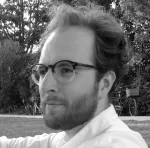
Embedded Dangers
Revisiting the Year 2000 Problem and the Politics of Technological Repair
More than any other recent event, the Year 2000 problem (better known as the Y2K bug) established the public awareness of the temporal and calendrical contingencies of computer systems. This talk revisits the Y2K bug to see what lessons can be drawn from this (non) event. Using archival research conducted at the Charles Babbage Institute, this talk undertakes an analysis of the Year 2000 Problem and the large-scale practices of technological repair and management that addressed it.
By recovering the organized response to the perceived threat of the Y2K bug, this project treats the crisis as one of the greatest, public-facing attempts to educate and train individuals and organizations to manage the unforeseen and potentially devastating effects old code can have on contemporary computerized infrastructures.
About Dylan
Dylan Mulvin is a Postdoctoral Researcher at Microsoft Research New England and a member of the Social Media Collective. He joined the collective after completing his PhD at McGill University. Dylan is a historian of technology, media, and computing whose work investigates the design and maintenance of new technologies. He examines how engineers, scientists, technicians, and bureaucrats make decisions about how to develop shared understandings of the world.
He has published on the history of video technology, television, and standards, and his work appears in Television & New Media, The Journal of Visual Culture, and The International Journal of Communication. He is co-editor, with Jonathan Sterne, of a special section of the IJOC on temperature and media studies. At MSRNE he is working on a history of the Year 2000 Problem, better known as the Y2K bug. This history attempts to recuperate the Y2K bug as a major repair event, an often overlooked milestone in public computer pedagogy, and one of the greatest recent efforts to train individuals, community groups, and policy makers in the management of precarious technological systems. A second project considers the history of light mitigation technologies—blue-blocking glasses and “night modes” for electronic devices—and the ethics and political implications of accounting for pain and harm in interface design.
Dylan’s research program combines methods from media studies, the history of technology, and infrastructure studies to show how technologies are made to appear seamless. His work shows how large-scale systems are built on decisions about micro-scale materials and protocols by drawing on archival methods to reveal how those who make new technologies model the world in usable ways. Infrastructures and standards shape what can be said and what can be represented and these systems are built on assumptions about the kinds of worlds we want to represent. To uncover these assumptions, this research studies the backstage negotiations that are necessary to make arbitrary decisions appear objective.
Download original audio or video from this event.
Subscribe to the Berkman Klein events series podcast.
You might also like
- communityThinking of Algorithms as Institutions